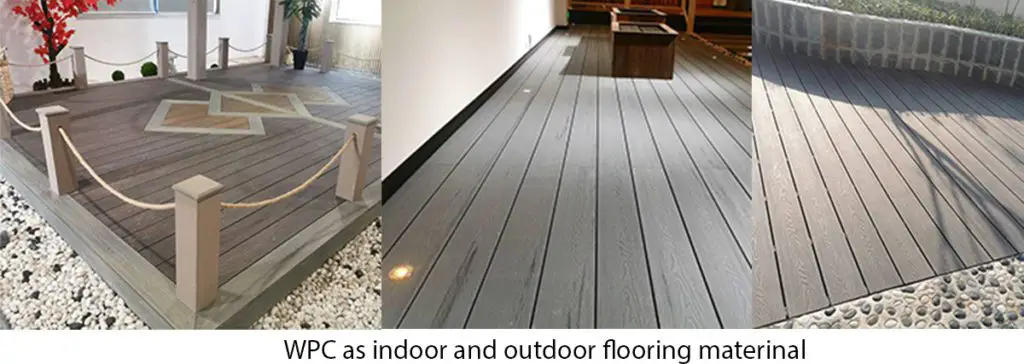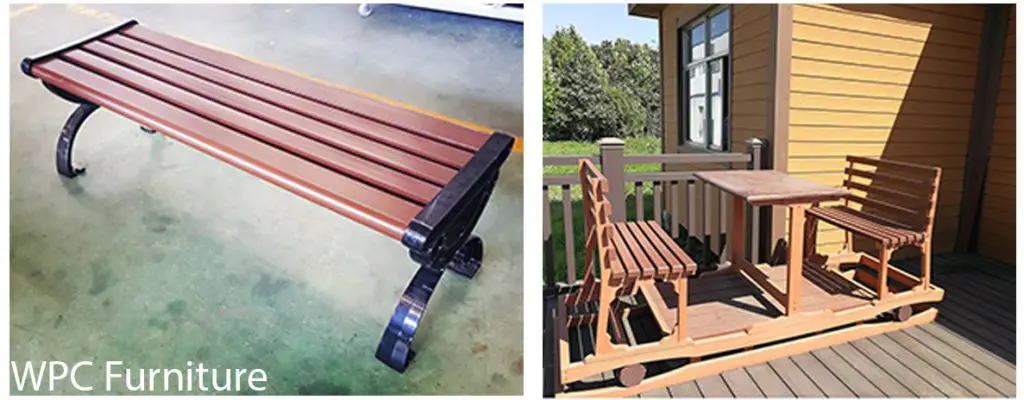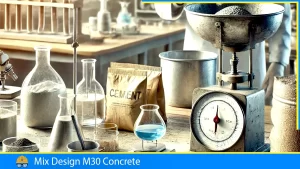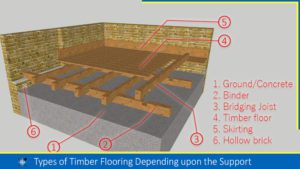Wood-Plastic Composites are the new edge building materials that have emerged recently compared to other building materials. Wood-Plastic Composite, commonly known as WPCs, have been found to have multiple applications in the field of building construction (interior and exterior), landscape, transportation, municipal engineering and DIY projects that are easily executable with the product.
What are Wood Plastic Composites?
Wood-plastic composites are composite materials obtained by mixing wood fibres (flour) and thermos plastic. Plastic components such as polyethene (PE), polypropylene (PP), polyvinyl chloride (PVC), or polylactic acid (PLA) are mixed with wood elements. WPC can be manufactured from recycled materials obtained from wood products as well as plastic powder.
The materials have many applications in construction works, and they are popularly used as decking and flooring materials. It can also be used as a partition wall as well as cladding for internal and external walls. Due to its popularity among the DIY (do it yourself) project, material production companies are producing a wide range of products for outdoor elements. However, the composites were first introduced as the decking elements.

Manufacturing of Wood-Plastic Composites
Wood plastic composites are produced by thoroughly mixing wood flour and heated thermoplastic resin. The product is then extruded into the desired shape using a variety of injection moulds. The extrusion and injection moulding process is carried out at a lower temperature of 28°C (50°F) than traditional plastics to prevent the wood particles from burning.
WPCs may be produced from either virgin or recycled thermoplastics including high-density polyethene (HDPE), low-density polyethene (LDPE), polyvinyl chloride (PVC), polypropylene (PP), acrylonitrile butadiene styrene (ABS), polystyrene (PS), and polylactic acid (PLA). PE-based WPCs are by far the most common. Additives such as colourants, coupling agents, UV stabilizers, blowing agents, foaming agents, and lubricants help tailor the end product to the target area of application. Extruded WPCs are formed into both solid and hollow products.
Property of Wood-Plastic Composites
- WPCs contain wood particles from 30 -60 % by weight.
- The extrusion process is carried out at a low temperature of 28°C (50°F).
- The materials are easily workable and any work can perform similarly to normal woodwork.
- Have a longer lifespan compared to some timber.
- WPCs are more heat resistant than typical timber.
Advantages of Wood-Plastic Composites
- The WPC materials are highly workable and can be easily handled and shaped using conventional woodworking tools.
- The materials do not corrode.
- One of the advantages of wood is that the material can be moulded to almost any desired shape.
- Another advantage of the materials is that it comes in many shades and does not require painting.
- The WPC products are known to be good termite resistant.
- WPC is more environmentally friendly and requires less maintenance than the alternatives of solid wood.
- They can however be recycled easily in a new WPC.
- The products are highly resistant to rot or decay.
- The materials come with micro-grooves which reduce the slip when used as flooring or decking materials.
- WPC materials are durable compared to normal wood and have a longer life span.
- WPC material is highly fire-resistant. Provides fire protection and keeps your furniture safe.
- Modified wood component in WPCs decreases moisture movements in the material, which means improved water resistance properties.
Disadvantages of Wood-Plastic Composites
- WPCs have lower strength and stiffness compared to natural wood.
- The material is not scratch-resistant.
- They lack natural wooden texture and the feeling of natural wood.
Uses
Prefab Houses: –
Although wood-plastic composites were first introduced as decking elements in the early 1990s, due to their physical properties of longevity and ease of handling, prefab houses can be constructed.
As Flooring Decks: –
WPCs are widely used for the flooring deck both for outdoor and indoor flooring. They are known to be used in swimming pool decks.

Panelling and Cladding: –
The material comes in a wide range of textures and colours which suits the use of wall cladding, louvre and panelling as a partition wall. They can also be used as an alternative to wood for cladding the interior and exterior walls. Can be placed on the wall in either direction, horizontally and vertically according to the desire of the individual.
Railing and Fencing: –
Due to the versatile nature of the martial, it can be used to construct the railing and post for the stair. They can also be used for the construction of boundary fencing.

Windows and Doors: –
Entire doors and windows or their elements can be made for the WPC. The installation of the WPC doors and windows is similar to that of other types.
Park Elements: –
WPC can also be used for the construction of the park elements, such as picnic benches, decking flooring for the pavilion, gallery and costume Pergola.
Furniture: –
Outdoor furniture such as benches and tables are some of the furniture made from the WPC. It is also used to make some indoor furniture such as shelves, cupboards, wardrobes, beds, tables, counters, etc.

Other uses: –
It has wide applications in day-to-day life usage. Just to name some, can be used for making photo frames, cover for telephones, dustbins, etc.
Also, read: Best Fire-Resistant Building Materials
FAQS:
What are Wood-Plastic Composites (WPCs)?
Wood-plastic composites are composite materials obtained by mixing wood fibres and thermos plastic. Plastic components such as polyethene (PE), polypropylene (PP), polyvinyl chloride (PVC), or polylactic acid (PLA) are mixed with wood elements.
Q: What are the main advantages of WPC over traditional wood?
A: WPC has several advantages over traditional wood, including increased durability, resistance to decay and rot, reduced maintenance requirements, and improved resistance to the elements.
Q: Can WPC be painted or stained?
A: Yes, WPC can be painted or stained, but it is important to use a product specifically designed for use on composite materials.
Q: Is WPC fire-resistant?
A: Some WPC products are fire-resistant, but it is important to check the specific product’s specifications to ensure it meets any necessary safety standards.
Q: How long does WPC last?
A: The lifespan of WPC can vary depending on the specific product and its use, but it generally has a longer lifespan than traditional wood due to its increased durability and resistance to the elements.
![]()







